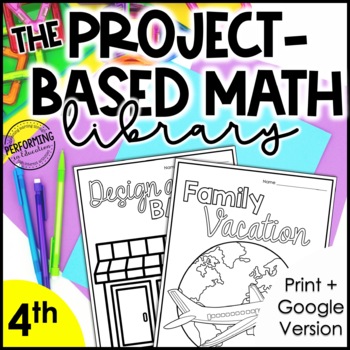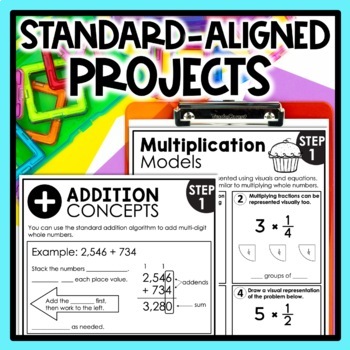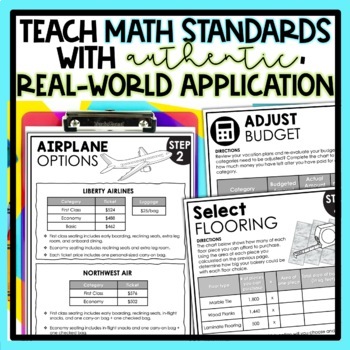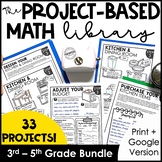The Project-Based Math Library | 4th Grade Math Project-Based Learning
- Zip
- Google Apps™

What educators are saying
Products in this Bundle (11)
showing 1-5 of 11 products
Bonus
Also included in
- This is a multi-grade library of 33 project-based math resources for grades 3-5. Each project-based math unit covers a specific math standard which makes these units perfect for standards-based math instruction.Each unit is a 5-day project-based math resource that applies math concepts in a real-worPrice $99.00Original Price $164.67Save $65.67
Description
This is a library of 11 project-based math resources for 4th grade. Each project-based math unit covers a specific math standard which makes these units perfect for standards-based math instruction.
Each unit is a 5-day project-based math resource that applies math concepts in a real-world scenario. In each 5-day unit is engaging and authentic and includes student voice and choice. Students are engaged in making decisions for their projects which increases student buy-in and interest in the project.
⭐️ Check out the preview video to learn more about project-based math.
This resource is available in both Printable & Digital Google Slides versions.
What's included in these resources:
•Background Knowledge: Using a KWL, students will build background knowledge around the project-based math topic.
•Instructional Pages: Teacher models and visuals are provided to teach students about the specific math concept.
•Skill Practice: After learning the math concept, students will practice the skill with practice pages.
•Application Pages: Students will apply the math skills that they have learned to the math project.
•Wrap Up: Students will write up or illustrate their final plan and explain their decisions.
***************************************************************************
Customer Tips:
How to get TPT credit to use on future purchases:
• Please go to your My Purchases page after you log in. Beside each purchase see a Provide Feedback button. Simply click it and you will be taken to a page where you can give a rating and leave a comment for the product. Each time you give feedback, TPT gives you feedback credits that you use to lower the cost of your future purchases. I value your feedback greatly as it helps me determine which products are most valuable for your classroom so I can create more for you.
Be the first to know about my new discounts, freebies and products:
• Click here to follow my store.
*****************************************************************************






